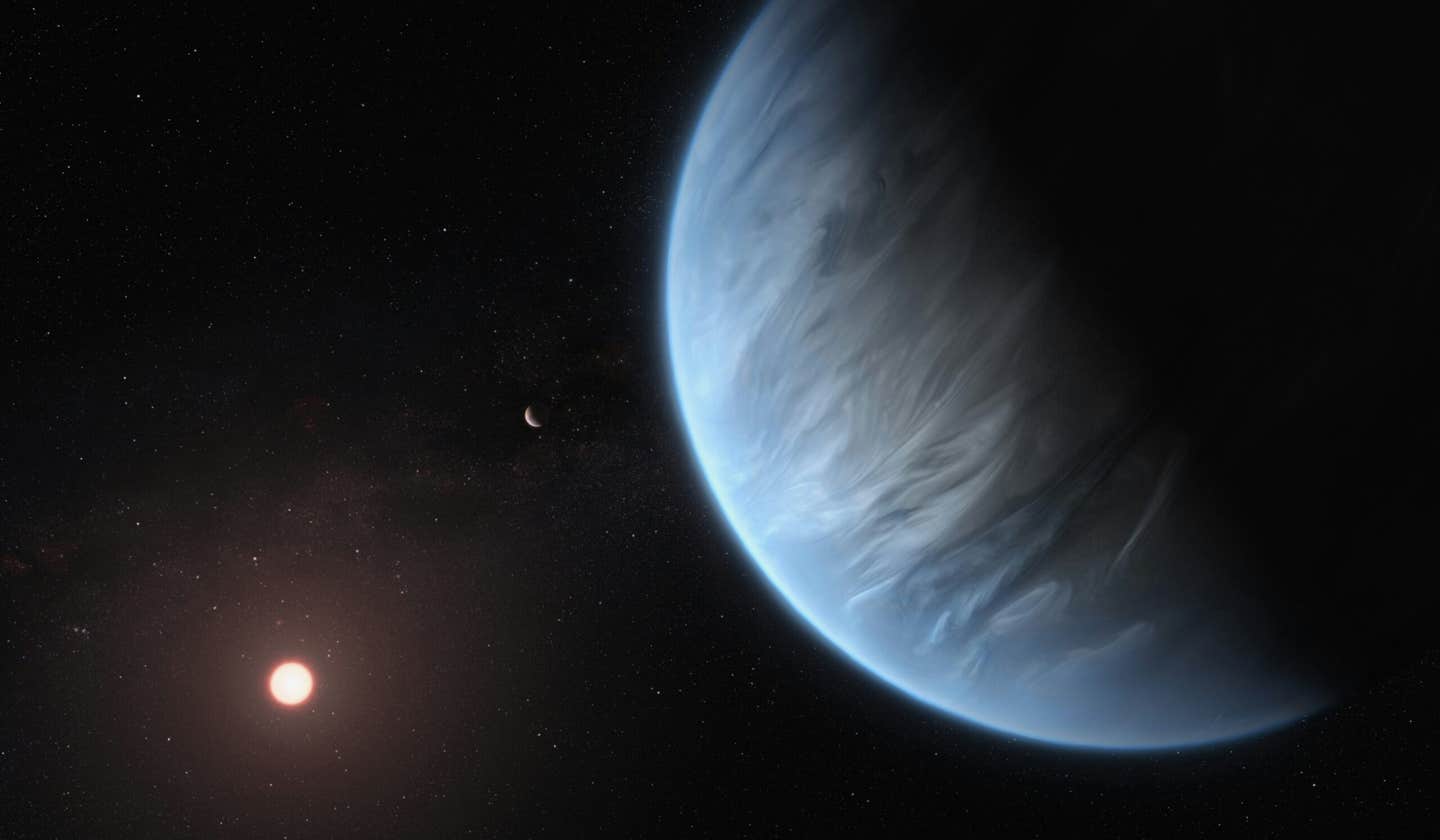Exoplanets may capture dark matter and collapse into black holes
Although dark matter makes up about 85 percent of all matter in the universe, it has never been directly observed.

A UC Riverside study suggests exoplanets could capture dark matter, collapse into planet-sized black holes. (CREDIT: NASA Hubble Space Telescope / unsplash)
Dark matter is one of the biggest puzzles in science. Although it makes up about 85 percent of all matter in the universe, it has never been directly observed. You can’t see it, touch it, or hold it in a lab, yet the way galaxies move tells scientists that it must exist.
A new study from researchers at UC Riverside, published in Physical Review D, proposes a bold new way to track it down: by using distant planets beyond our solar system as natural laboratories.
Exoplanets as Dark Matter Traps
Exoplanets, particularly massive gas giants similar to Jupiter, may act as cosmic “nets” for capturing dark matter. These planets are enormous, cold, and dense, which makes them well suited for trapping the elusive particles. As streams of dark matter move through space, some particles could pass into a planet and collide with atoms inside it. If they slow down enough, the planet’s gravity could catch them.
Over time, these captured particles would sink deeper into the planet. Unlike some models where dark matter particles annihilate each other on contact, the version studied here involves superheavy non-annihilating particles. That means they would not cancel out but instead build up inside the planet’s core. Eventually, the dense collection could collapse into a black hole.
“If the dark matter particles are heavy enough and don’t annihilate, they may eventually collapse into a tiny black hole,” said first author Mehrdad Phoroutan-Mehr, a UC Riverside physics graduate student. “This black hole could then grow and consume the entire planet, turning it into a black hole with the same mass as the original planet. This outcome is only possible under the superheavy non-annihilating dark matter model.”
The Birth of Tiny Black Holes
When people think of black holes, they usually picture giants as massive as a star or even millions of times larger. But the study suggests something far smaller and stranger. A planet packed with dark matter could collapse into a black hole with a mass no bigger than the planet itself. In certain conditions, a single exoplanet could even produce multiple black holes during its lifetime.
Related Stories
- Astronomers find exoplanets are far larger than previously believed
- Two bold dark matter theories could reveal the universe’s missing mass
Not all black holes born this way would survive. The tiniest ones could vanish almost as soon as they appear due to a process known as Hawking radiation, which causes black holes to lose energy and evaporate. Others could grow larger by pulling in material from their host planet, eventually devouring it completely. The range of possible outcomes depends on the mass of the dark matter particles and how strongly they interact.
“Discovering a black hole with the mass of a planet would be a major breakthrough,” Phoroutan-Mehr said. “It would support the thesis of our paper and offer an alternative to the commonly accepted theory that planet-sized black holes could only form in the early universe.”
Hunting for Signs in the Sky
So how might you detect such strange events? Astronomers point to a few possible signals. One clue could be finding free-floating objects in space with the mass of a planet but no light or heat—signs of a planet that collapsed into a black hole. Another signal could be bursts of high-energy cosmic rays from black holes that briefly form and evaporate. A third sign might be a rise in an exoplanet’s temperature if a black hole forms inside and begins feeding on surrounding material.
Current instruments may not be sensitive enough to capture these signals, but next-generation telescopes could be. The James Webb Space Telescope and other upcoming missions are already opening new windows on exoplanets, collecting data in greater detail than ever before.
“In recent years, our knowledge of exoplanets has expanded dramatically, and several upcoming space missions will provide even more detailed observations,” Phoroutan-Mehr explained. “With this growing body of data, exoplanets can be used to test and challenge different dark matter models.”
A New Direction in Dark Matter Searches
Traditionally, scientists have searched for dark matter by studying stars, neutron stars, white dwarfs, or even our Sun. These massive objects can be heated or altered in subtle ways if dark matter interacts with them. For instance, some models predict that neutron stars should warm up when dark matter particles accumulate inside. Finding old, cold neutron stars can therefore rule out certain models.
Exoplanets, however, bring something new to the table. They are abundant, diverse, and now observable in large numbers. More than 5,000 have been discovered so far, with thousands more expected in the near future. These planets not only provide fresh insight into how solar systems form but may also serve as natural dark matter detectors.
The fact that Jupiter and many other gas giants have not yet collapsed into black holes already helps researchers narrow down which dark matter models remain possible. Each observation adds another piece to the puzzle.
The study also introduces the idea of repeatable black hole events inside planets. If a black hole forms, evaporates, and then dark matter continues to build up, another collapse could follow. This cycle could produce periodic signals such as bursts of radiation or recurring temperature spikes. Detecting such repeating patterns in exoplanet data would be a strong sign of dark matter at work.
The Road Ahead
Although dark matter continues to defy direct detection, studies like this expand the range of possibilities. Instead of only relying on particle colliders or underground detectors, astronomers now have the chance to use planets light-years away as cosmic testbeds.
“As we continue to collect more data and examine individual planets in more detail, exoplanets may offer crucial insights into the nature of dark matter,” Phoroutan-Mehr said.
Practical Implications of the Research
If exoplanets can be used to confirm the existence of superheavy dark matter, the impact would be profound. It would not only explain the missing matter of the universe but also change how scientists understand black hole formation.
Observing tiny black holes could help redefine the boundaries of physics, offering clues about gravity, particle physics, and cosmic evolution.
For the public, this means a deeper grasp of the invisible forces shaping the cosmos, while for researchers it provides a new path toward one of science’s most elusive goals—finally identifying what dark matter really is.
Note: The article above provided above by The Brighter Side of News.
Like these kind of feel good stories? Get The Brighter Side of News' newsletter.



